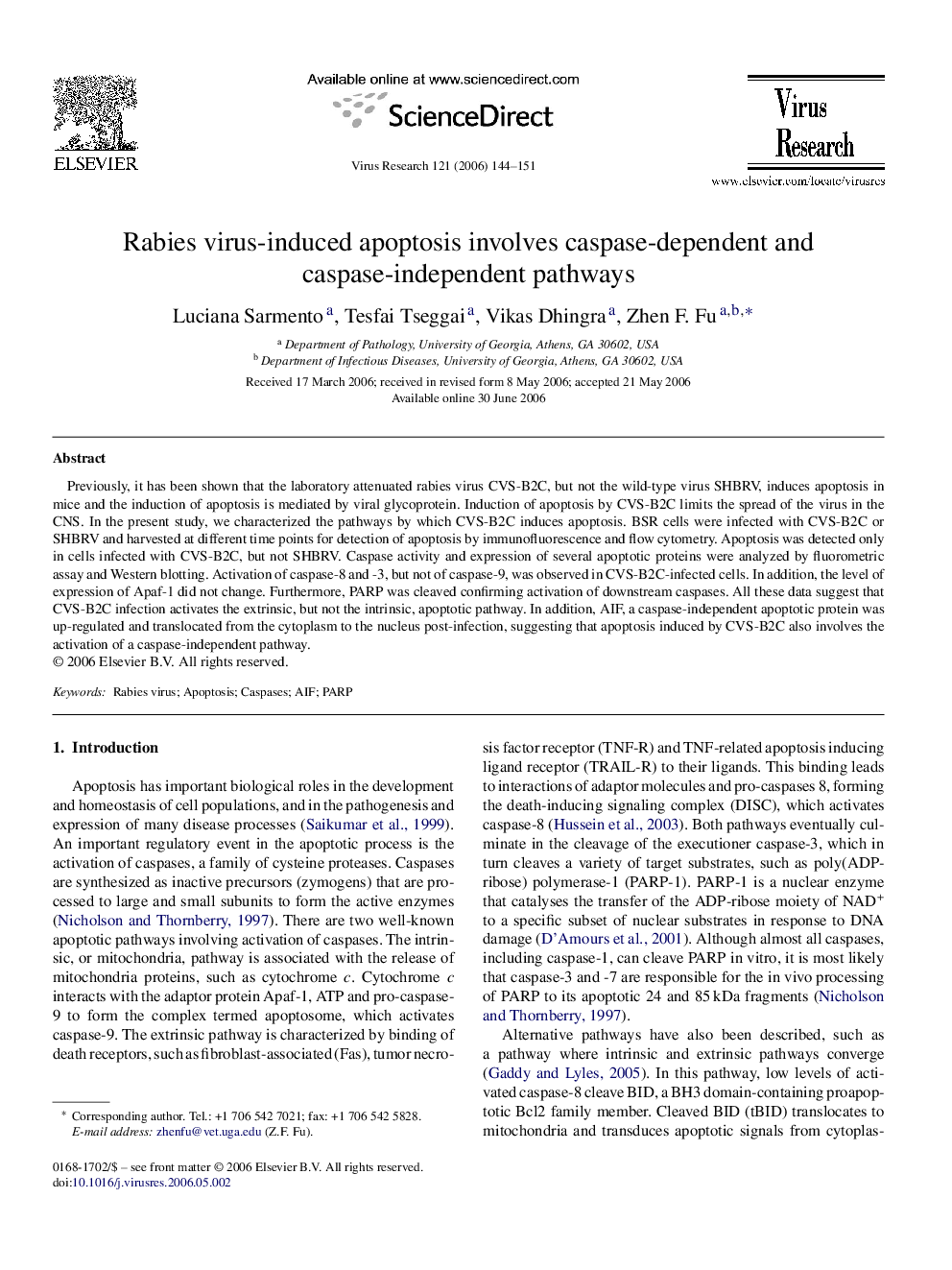| Article ID | Journal | Published Year | Pages | File Type |
|---|---|---|---|---|
| 3431056 | Virus Research | 2006 | 8 Pages |
Previously, it has been shown that the laboratory attenuated rabies virus CVS-B2C, but not the wild-type virus SHBRV, induces apoptosis in mice and the induction of apoptosis is mediated by viral glycoprotein. Induction of apoptosis by CVS-B2C limits the spread of the virus in the CNS. In the present study, we characterized the pathways by which CVS-B2C induces apoptosis. BSR cells were infected with CVS-B2C or SHBRV and harvested at different time points for detection of apoptosis by immunofluorescence and flow cytometry. Apoptosis was detected only in cells infected with CVS-B2C, but not SHBRV. Caspase activity and expression of several apoptotic proteins were analyzed by fluorometric assay and Western blotting. Activation of caspase-8 and -3, but not of caspase-9, was observed in CVS-B2C-infected cells. In addition, the level of expression of Apaf-1 did not change. Furthermore, PARP was cleaved confirming activation of downstream caspases. All these data suggest that CVS-B2C infection activates the extrinsic, but not the intrinsic, apoptotic pathway. In addition, AIF, a caspase-independent apoptotic protein was up-regulated and translocated from the cytoplasm to the nucleus post-infection, suggesting that apoptosis induced by CVS-B2C also involves the activation of a caspase-independent pathway.
